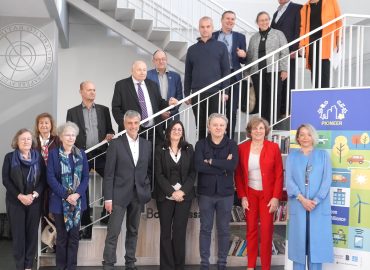In the aftermath of COVID-19, there have been the first optimistic reports of an upturn in international student mobility. Whether this positive development will continue depends largely on the current geopolitical reality and how well higher education in Europe is able to cope with instability and turbulence resulting from regional conflicts, economic crises and societal polarisation. This article provides some food for thought with regards to what affects mobilities, the impact of mobilities and how to adapt to the challenges identified above.
Since the launch of the European Union’s Erasmus programme in 1987, some 14 million people have benefited from opportunities to study, train, work or volunteer abroad by the end of 2022 (European Commission 2023a). The added value of mobility is widely recognised. A learning experience abroad offers an unparalleled opportunity for students/trainees to develop valuable skills, broaden their personal and professional horizons and enhance their networks. Against this background, the European Commission is currently concerned about the prevailing decline or stagnation of mobility in higher education in Europe and is taking action to put student mobility back on a growth path.
As a concrete measure to strengthen mobility, the new Council Recommendation ‘Europe on the Move’ – learning mobility opportunities for everyone as part of the Talent Mobility package was adopted in November 2023 (European Commission 2023b). The Recommendation is a fundamental part of the European Education Area (EEA), which aims to integrate learning mobility into all education and training pathways, to increase the proportion of people in the EU who benefit from a learning period abroad, and to involve more people with fewer opportunities in learning mobility, including people with disabilities. Moreover, the Recommendation promotes the attractiveness of the EU as a learning destination for talent from third countries.
Although policies and programmes to promote and structure learning mobility have been in place in Europe for decades, there are still many barriers that individual learners face when moving across borders. A recent study found that the main obstacles to learning mobility in different sectors of education and training are lack of funding, insufficient awareness of existing opportunities, inconsistent recognition policies and practices, and low interest (Kirdulytė, Abozeid, Makauskė et al. 2023). Also several demographic factors, such as area of residence (urban vs. rural environment), gender and age are associated with attitudinal, informational and financial barriers. Thus, new approaches to identifying measures that make cross-border student mobility more inclusive for those living in rural areas will be needed. (Di Pietro 2023).
Complexities around mobility
The 2021-2027 Erasmus+ programming period is half-way through, and the first steps to design the next programming period (2028-2034) have already been taken. Funding for the programme has increased over the years, and discussions have already taken place on whether funding for the programming period starting in 2028 could be doubled from the current EUR 26.2 billion to EUR 52 billion (European Youth Forum 2023). The objectives and funding of the Erasmus+ programme for 2028-2034 will be decided by the new European Parliament, which was elected in June 2024. If programme funding continues to increase, it will send an important signal to the countries participating in Erasmus+ that internationality is valued and promoted to strengthen social inclusion, the green and digital transitions and participation in democratic life. The Erasmus+ programme does not only address students in higher education, but is also open for professors, teachers, trainers, adult learners, young people, youth workers and many more (European Commission 2023c).
Nevertheless, even a cursory look at current global political developments reveals alarming prospects for higher education mobility and internationalisation in general. Overall, the current geopolitical instability has affected European student mobility in higher education. In addition to the Covid-19 pandemic, the growth curve of (not only student) mobility has been disrupted by the war in Ukraine, Brexit, and climate change. Against this background, how the European universities will be able to encourage and motivate students to undertake a mobility experience to another country in times of uncertainty and negative trends requires careful analysis.
In higher education, students state that the time spent on a study experience abroad has a negative effect on the duration and permeability of their studies. Even though their studies abroad are usually recognised by their home university (though not necessarily always the case), the fact that their graduation may be delayed after one or two semesters abroad is seen as critical. At the same time there is recent evidence showing that student exchange does not delay studies or extend the duration of studies (Granato, Havari, Mazzarella & Schnepf 2024), although there may always be individuals for whom the opposite is the case.
Climate change has an impact on the numbers and volume of mobility. This brings with it increased travel costs, which is why more students opt for virtual (or hybrid) mobility. The growing number of virtual mobilities is also reflected in a study conducted by the European University Association (2023). It shows ”that 51 % of 390 institutions are preparing long-term plans to further explore virtual student mobility.” Of these institutions, 25 % already have virtual mobility in place as a standard or mandatory practice.
PIONEER Alliance promotes mobilities
The PIONEER Alliance that consists of ten higher education institutions from across Europe works on sustainable development of future cities. To this end, a common strategy for challenge-based education, impact-driven research and ecosystem co-creation will be put in action. An important element of this strategy is the creation of a European open campus that offers students, doctoral candidates and staff opportunities for study and professional development. In addition to the wide range of learning opportunities available from the various PIONEER universities, this open campus includes the promotion of international student and staff mobility in the post-pandemic world.
Authors: ,




